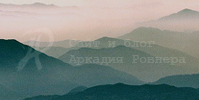JEAN VAYSSE
French surgeon and teacher
Vayasse, Jean (1917-1975) was born in Le Mans, France. In his ordinary life Jean Vaysse participated during the 1950s et ’60s in the great discoveries of modern surgery: renal grafts, cardiopulmonary bypasses, and surgery for arterial hypertension.
His quest to understand the meaning of life brought him in 1947 to an encounter with the teaching of Gurdjieff. Working in the groups in Paris and later helping to lead them through the 1960s, Jean Vaysse felt the time had come to express Gurdjieff’s written teaching in a more coherent and logical way in order to bring it within the range of the average educated reader. Jean Vaysse was a long time pupil of Jeanne de Salzmann.
He wrote “Toward Awakening: An Approach to the Teaching Left by Gurdjieff.”
Jean Vaysse helped produce the film documentary: Georges Gurdjieff produced by Jean-Claude Lubtchansky.
Jean Vaysse softens the rather terrifying impact of Gurdjieff’s teaching as it is transmitted by Ouspensky. He gives substance to the ideas, several of which have become popular in modern psychology, and–without detracting too much from what the pupil has to do for himself–begins to show how they are related together. His book is one of the first accounts to hint at the practical approach to work through giving attention to the sensation of the body, a study of which was central in Gurdjieff’s method and which has been carefully transmitted by Madame Jeanne de Salzmann.
The book:
Some quotes from his book Toward Awakening: An Approach to the Teaching Left by Gurdjieff:
Page 35, “We live in self-forgetfulness, and it all happens without leaving any trace. Life lives itself, but there is no ‘fruit’ for the one who lives it.”
Page 41, “But a real feeling would be something quite different. We live with nothing but automatic emotional reactions, feelings that follow each other in rapid succession at each instant of our lives and cause something in each circumstance to please us or displease us, attract us or repel us.”
Page 42,”Thus the struggle against automatic habits established in each of our centers can be a support for the early stages of self-observation, just as later another kind of struggle — of oneself with oneself (between two aspects of my nature) — will be necessary to serve as a basis for the appearance of a ‘presence,’ and later still the struggle between the yes and the no (that is between these two natures) will be necessary for spiritualization.”
Page 79, “In my ordinary state, I have no true feelings, I have only automatic emotions, the emotions of reaction, depending entirely on which personage is present.”
Page 80, “The emotional center becomes capable of real feeling only when a stable presence, relatively independent of surrounding circumstances has been developed… The feeling of self that accompanies awakening to oneself is the first real feeling that human beings can have;…”
Page 90, “… the sensation of ourselves is there or it is not there, depending on whether we are turned toward ourselves or attracted outside, and this is why it can be considered one of the best tests for verifying the reality of efforts toward self-awareness.”
Page 92, “And above all, as I become more able to see myself, the inadequacies and failures that I record no longer arouse regret and resolutions or impulses ‘to correct myself,’ but bring instead the true ‘subjective’ feeling of remorse of conscience.”
Page 98, “When the emotional center works for another center, it brings with it its sensitivity, its speed, its intensity and above all, an egocentric quality that gives it away more than another sign does. When it works instead of the intellectual center it produces nervousness, feverish and unnecessary haste, exactly where, on the contrary, calm judgement and deliberation are called for. When it works instead for the moving center, it produces impulsiveness and a tendency to be carried away rather than making the right movement. In the place of the instinctive enter, it produces exaggerated effect and too much or too little activity.”
Page 99, “The intellectual center is neither capable of substituting for the moving center nor of controlling movements– sensation does not exist for it, sensation is a dead thing for which it substitutes visualization.”





